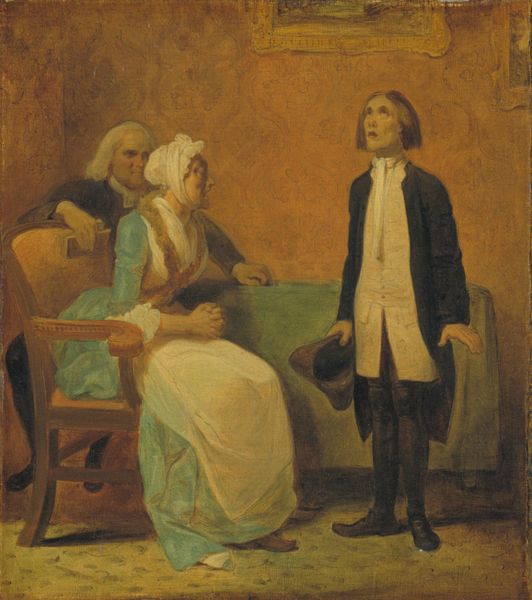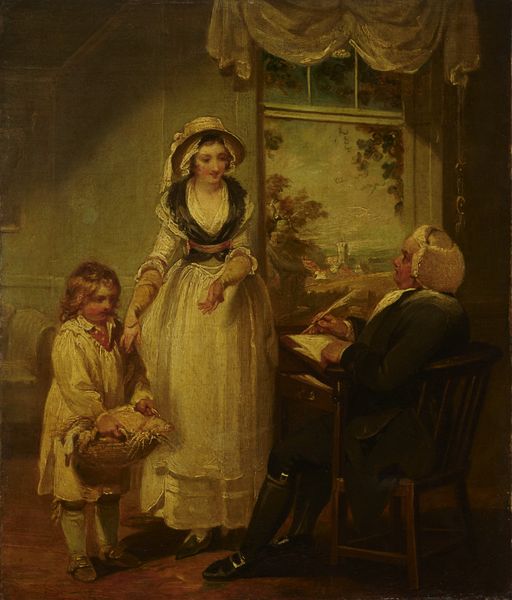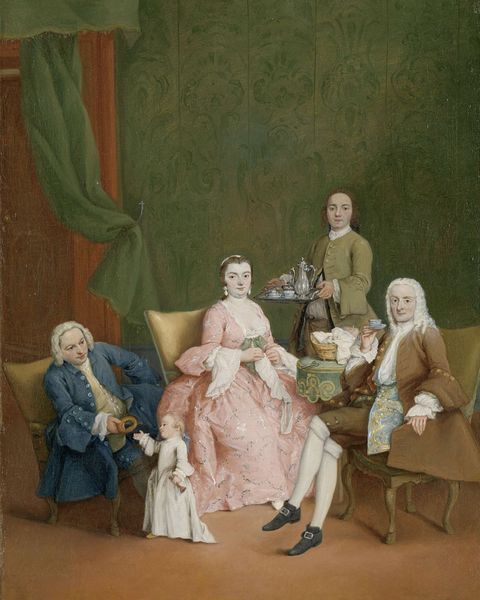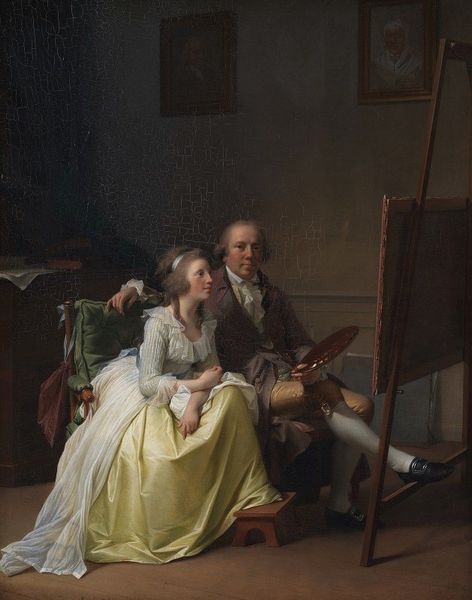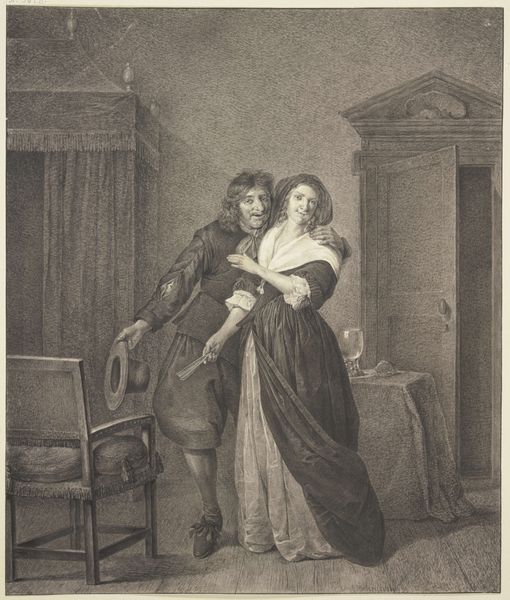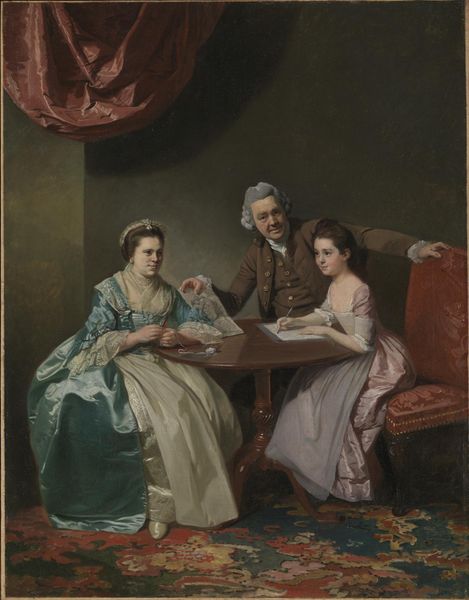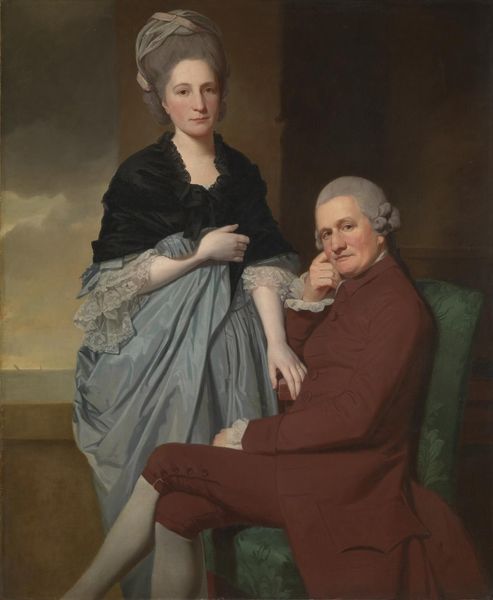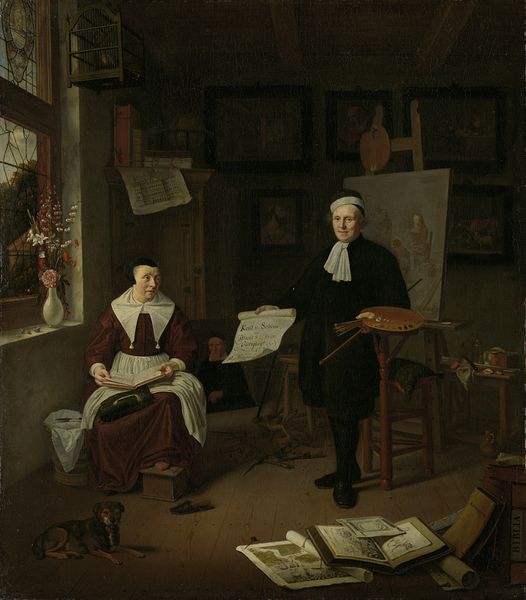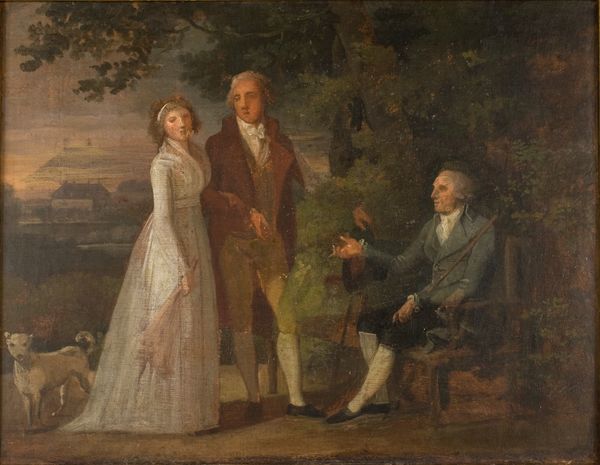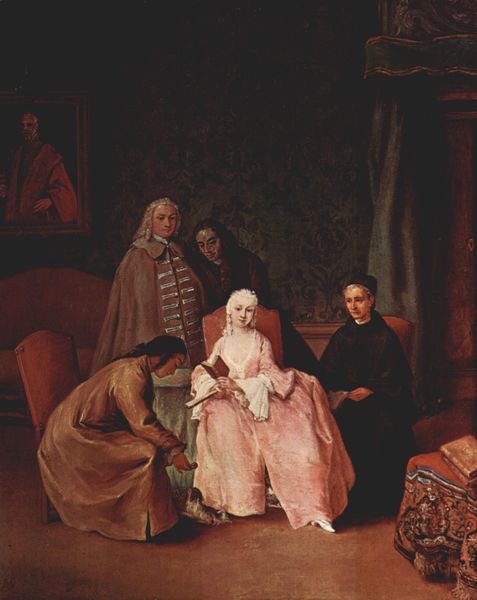
Zelfportret van Wybrand Hendriks (1744-1831), met zijn vrouw Agatha Ketel (1736-1802) 1791
0:00
0:00
painting, oil-paint
#
portrait
#
painting
#
oil-paint
#
romanticism
#
genre-painting
#
academic-art
Dimensions: height 52 cm, width 47 cm, depth 6.5 cm
Copyright: Rijks Museum: Open Domain
Editor: We are looking at a double portrait today: Wybrand Hendriks’s "Self-portrait with his wife Agatha Ketel" made in 1791 with oil on canvas. It is lovely. The mood is domestic but reserved, what stands out is the color, especially the very soft, elegant, almost watery green of Agatha’s dress. How do you begin to analyze a piece like this? Curator: Indeed. Let us first consider the formal construction. Note how the composition divides almost symmetrically. The artist and his wife each occupy their own sphere within the frame, balanced not just horizontally but vertically, too. The painter is dynamic in mid-action. The sitter, on the other hand, static. Editor: So the placement creates a visual binary of action versus stillness? Curator: Precisely. Further, consider the texture and layering of the paint. Notice how the floor's geometry contrasts with the organic flow of the wife's gown. The brushwork defining the planes is also very controlled, creating a palpable sense of depth, particularly as we move into the implied space occupied by the easels. Does the subdued palette further communicate anything to you? Editor: Now that you point it out, yes. The muted color scheme, dominated by cooler tones, subdues any potential vibrancy, lending itself to this formal atmosphere. The contrast with the dark lines of the floor make it rigid, imposing a controlled, almost geometric grid that might express rationality or order. Curator: You are beginning to understand the nuanced relationships that a Formalist analysis unveils. This painting embodies balance. This harmony, created by composition, color, and form, constructs a visually and conceptually robust artwork. Editor: Thanks. I hadn’t considered the impact of that controlled balance. Curator: Now you recognize a formal vocabulary available to your analysis, and so perceive the underlying semiotics, too.
Comments
No comments
Be the first to comment and join the conversation on the ultimate creative platform.
